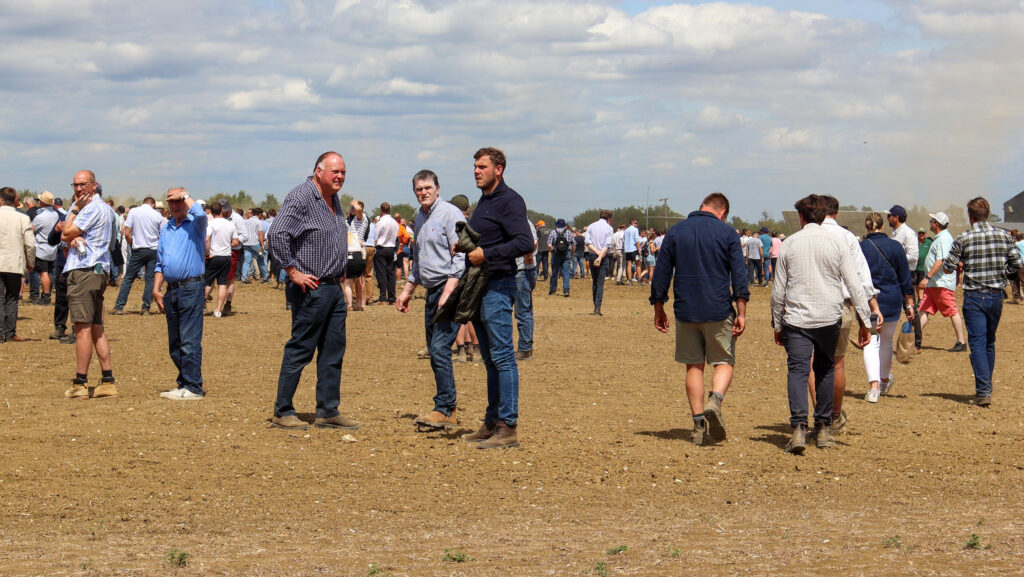Editor’s View: Tight times ahead for arable – who can win?
 Farmers at the PX Farms Open Day © Brocks Wheel and Tyre
Farmers at the PX Farms Open Day © Brocks Wheel and Tyre Two trips in the past two weeks have given a fresh perspective on the challenges posed to the arable sector by the current ultra-low prices, and how farmers will be forced to respond to them.
The PX Farms open day in Cambridgeshire and the Groundswell festival in Hertfordshire (or “Grasstonbury” as some now insist on calling it) were both part technical demonstrations and part quasi-religious experiences.
See also: Hot weather triggers early barley harvest nationwide
The good news being preached to adoring crowds at PX Farms: “There is a bright future for farming as the withdrawal of subsidy will lower the barriers to the big getting bigger.”
James Peck, who farms in excess of 5,000ha, certainly practices what he preaches and put on a tremendous debut event.
Supported by speakers that included large-scale machinery manufacturers and global farmers, together they looked forward to a more mechanised future with far fewer individual farming businesses.
The good news being preached to adoring crowds at Groundswell: “We have only just begun to appreciate the environmental improvements we can deliver alongside food production – and these two things do not have to be antagonistic.”
And (perpetually) just over the horizon is a wealth of private sector funding from the supply chain for delivering this.
But until we get to those sunlit uplands, consultancy firm Andersons delivered a sobering assessment of the financial health of its model regenerative farm.
It shows that the system is not immune to the financial woes facing its conventional counterparts, with heavy reliance in England this year on the now-closed Sustainable Farming Incentive scheme.
Without a gross income of £139/ha (before costs of compliance), Andersons says its unit would be losing a forecast £83/ha in this financial year.
Clearly, this is the situation now facing those who did not enter the scheme.
The upshot?
“I think we could see quite a lot of rationalisation of trading businesses in the next five years,” said Andersons partner Sebastian Graff-Baker.
So all signs point towards the big getting bigger, and at a faster clip than is already happening.
But is it inevitable – and will anyone benefit beyond this new breed of farming aristocracy?
You first need to grapple with whether or not the biggest businesses are actually the most resilient, as they often have higher borrowings and less ability to pay the attention to detail needed to keep output high and costs low.
Some of those swallowed up by consolidation would certainly not miss the stress of running their own business – particularly if they can collect a salary from another farmer instead.
And I am all for farmers unlocking better prices from the supply chain by having the improved bargaining power that scale brings.
Those who seek a path for our sector that retains more small businesses must articulate a vision that is popular and credible, and can exclude or compete with the imports that would surely undercut it.
Both our Opinion columnists this week have had a stab. And they don’t have much time.
We are now, as the CAAV secretary Jeremy Moody said, “in the first year of the decade where we make our future”.

